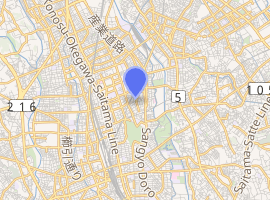Ōmiya Bonsai Village
Ōmiya Bonsai Village (大宮盆栽村, Ōmiya Bonsai-mura) is the nickname for the bonsai nursery precinct in Bonsai-chō (盆栽町, Bonsai-chō), Kita-ku, Saitama, Japan.
| Ōmiya Bonsai Village | |
|---|---|

| |
| Type | Bonsai nursery |
| Nearest city | Kita-ku, Saitama, Japan |
| Coordinates | 35.927763°N 139.631513°E |
| Area | 330,000 square meters |
| Created | 1925 |
| Open | Daily except Thursday |
Bonsai Village is located near Ōmiya-kōen Station on the Tobu Noda Line. It is closed on every Thursday (unless the Thursday falls on a national holiday).
History
- 1925: Settled by a group of professional bonsai gardeners who originally lived around Dangō-Zaka (Hongō) area in Tokyo and emigrated from there due to the crucial damages caused by the Great Kantō earthquake in 1923, at Toro and Hongō settlements of Ōsato village.[1]
- 1940 Ōsato village merged with other villages to form Ōmiya city.
- 1957 The official suburb name 盆栽町 (Bonsai-chō, lit. Bonsai Town) was given to the precinct.
- 2001 Ōmiya city merges with other cities to form Saitama City.
- 1 April 2003 on the day of the government designation of Saitama City Bonsai-chō was classified in Kita-ku.
Today
The Bonsai Village consists of about ten privately owned bonsai gardens. From the early 1990s, Omiya Bonsai-cho has seen a slight contraction in the number of nurseries. As of 2007, the Bonsai Village contains hundreds of thousands of bonsai trees in a site of about 330,000 square meters.[2]
The area also contains the Omiya Bonsai Art Museum, opened in 2010. The museum has indoor exhibits of bonsai history and art, as well as an outdoor area with a number of bonsai specimens. Some of the museum's materials were drawn from the Takagi Bonsai Museum of Art in Tokyo.[3]
Each year, Bonsai Village holds the "Great Bonsai Festival" from 3–5 May. During the festival the area is packed with many bonsai devotees from all over Japan.
See also
- Bonsai - Japanese tradition of growing miniature trees in containers
References
- http://www.geocities.co.jp/HeartLand-Apricot/7111/sub2-2.htm from The Birth of Bonsai Town (盆栽町, Bonsai-chō no Tanjō) by Shōzō Kusakabe, 1996.
- "Enjoying Bonsai and Horticulture" (PDF). Japan National Tourism Organization. Retrieved 10 November 2012.
- "The Omiya Bonsai Art Museum, Saitama" (PDF). Japan National Tourism Organization. Retrieved 10 November 2012.